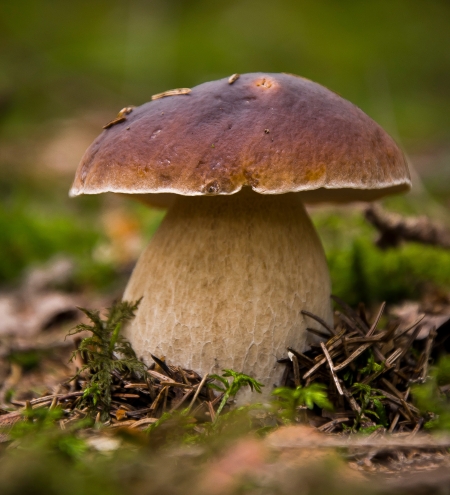Fungus Among Us – Common Fungal Issues in CT You Should Know About

Maintaining a lush, healthy lawn and landscape in Connecticut isn't always as simple as mowing, watering, and fertilizing. Hidden below the surface, fungi are constantly at work. While some are harmless or even beneficial, others can quickly turn into frustrating lawn and plant problems if left untreated. From mushrooms popping up in the grass to diseases like Cedar Apple Rust and lawn blights, here's what every Connecticut homeowner should know about fungal issues—and how to keep them under control.
The Beneficial Side of Fungus – Nature's Underground Network
Not all fungi are harmful. In fact, many play an essential role in soil health. Mycorrhizal fungi form symbiotic relationships with plant roots, extending their ability to absorb water and nutrients like phosphorus. This underground fungal network, along with other beneficial microbes, helps plants thrive and builds resilience against stress. A balanced lawn care program encourages this healthy microbial life while targeting only the harmful fungi that cause damage.
Mushrooms in the Lawn – Normal, but Unsightly
It's common to see mushrooms appear after rain or during periods of high humidity. These fungi thrive in moist, organic-rich soil and are a natural part of the decomposition process. While harmless to your lawn, they can be unsightly. Simply mowing them down or removing them by hand works fine. If mushrooms appear frequently, it's usually a sign that your lawn has excess thatch or drainage issues. Aerating the soil can help.
Slime Mold – A Strange but Temporary Visitor
Slime mold often appears as a gray, white, or even bright-colored powdery coating on grass blades. While it looks alarming, slime mold doesn't damage the turf itself. It feeds on decaying organic matter and usually disappears in a few days. A quick brushing or mowing will clear it away. The key is not to panic—slime mold is more of a visual nuisance than a threat.
Cedar Apple Rust – A Fungal Connection Between Junipers and Apples
If you notice bright orange, jelly-like growths on Eastern Red Cedar or juniper trees, you're seeing Cedar Apple Rust. This fungus requires both junipers and apple/crabapple trees to complete its life cycle. On apples, it causes unsightly leaf spots and can reduce fruit quality. Treatment includes pruning infected branches and applying fungicides at the right times in spring.
In severe cases, you may want to consider removing or relocating either the apple/crabapple or the juniper/cedar host tree to break the cycle and reduce reinfection.
Lawn Fungus – Brown Patches, Dollar Spot, and More
When weather turns warm and humid, lawn fungi become active. Connecticut lawns often battle:
- Brown Patch: Circular dead spots that thrive in hot, humid weather.
- Dollar Spot: Small, silver-dollar-sized spots that can merge into large dead areas.
- Red Thread: Pinkish-red threads across thinning turf in cool, wet conditions.
Lawn fungi are opportunistic—feeding on weak, stressed grass. Overwatering, mowing too short, and heavy thatch buildup create ideal conditions for these diseases. Left untreated, fungus spreads quickly and may require reseeding.
How to Treat and Prevent Lawn & Landscape Fungal Issues
- Improve Drainage & Airflow: Aerate, dethatch, and avoid compacted soil.
- Water Wisely: Water deeply but infrequently, and early in the morning to reduce leaf wetness.
- Mow Properly: Keep blades sharp and avoid scalping the grass.
- Prune Infected Plants: Remove infected leaves and branches promptly.
- Apply Fungicides Preventatively: Once fungus takes hold, it's harder to control. Consistent applications are the best defense.
Stop Fungus Before It Starts – Protect Your Lawn & Garden
Fungal issues are a natural part of our Connecticut environment, but they don't have to take over your lawn or landscape. The best solution is prevention. At Shannon Lawn & Landscaping, we recommend continuous fungicide applications from spring through summer to protect your turf and plants before problems appear.
👉 Contact us today to set up your seasonal lawn care program and enjoy a greener, healthier lawn all year long.
📍 Shannon Lawn & Landscaping
1111 Honeyspot Rd, Stratford, CT
📞 203-375-8240
Take Your Lawn Back With Our Lawn Care & Landscaping Services Based In Stratford, CT and Serving Fairfield and New Haven Counties